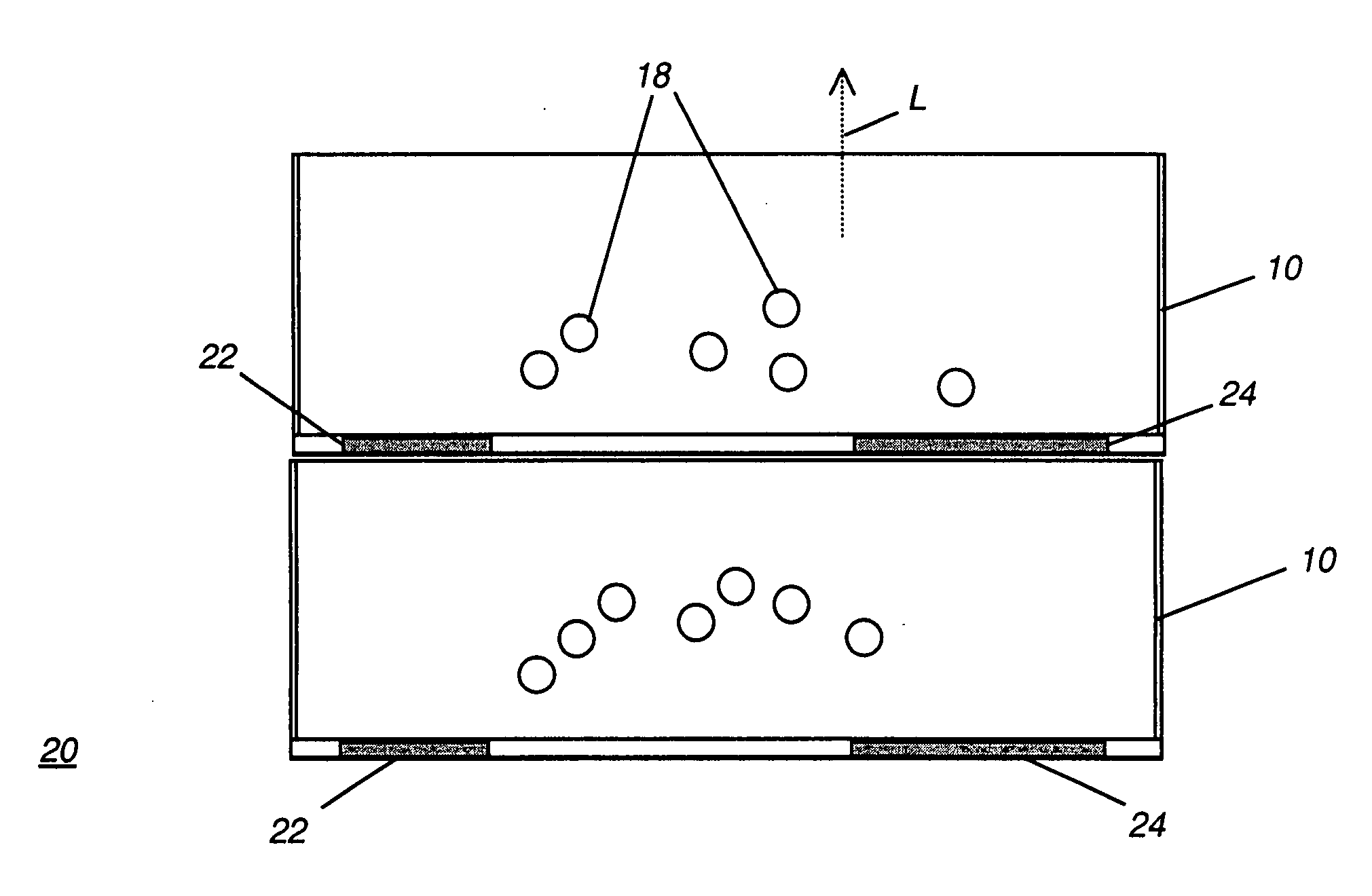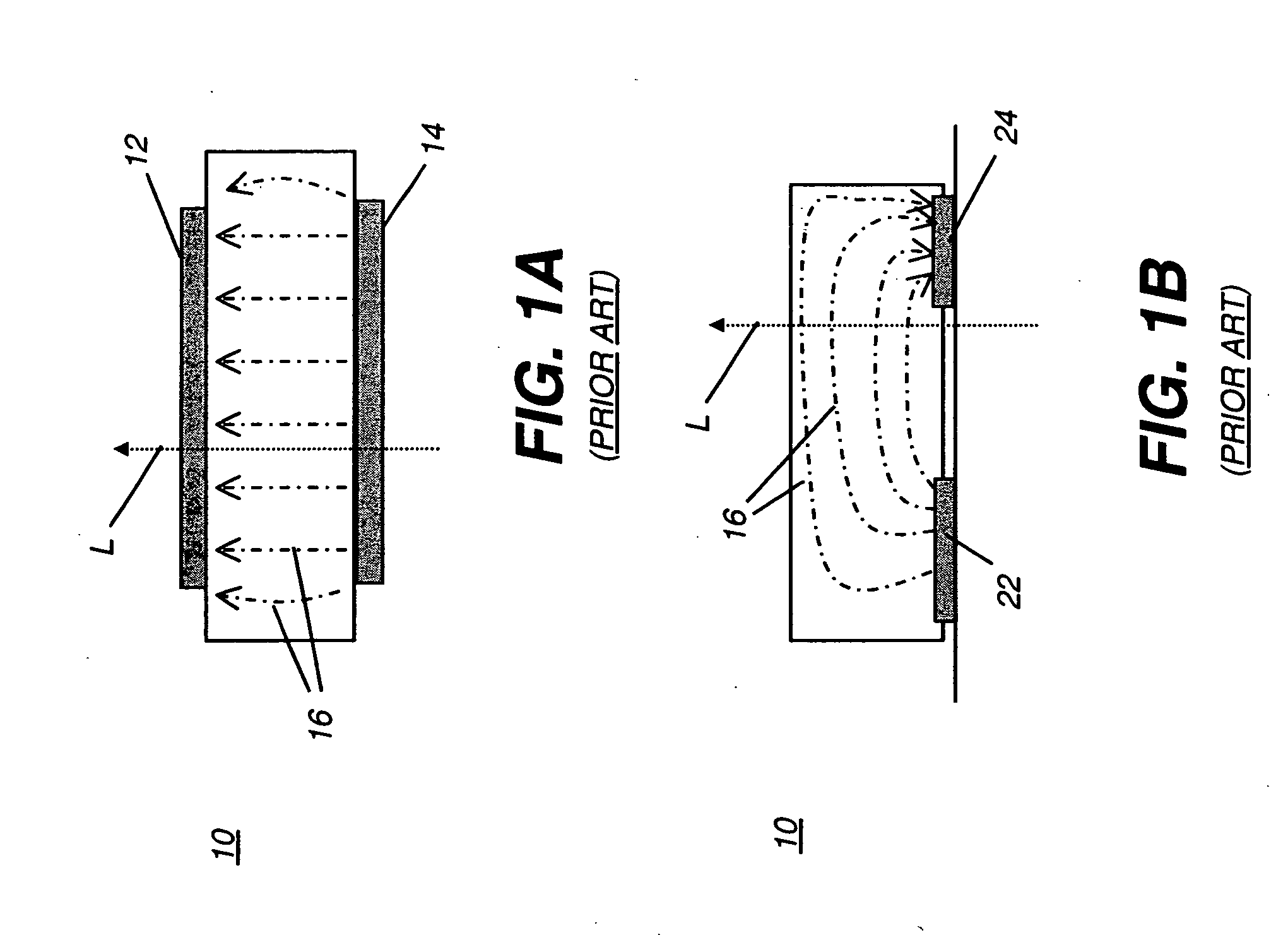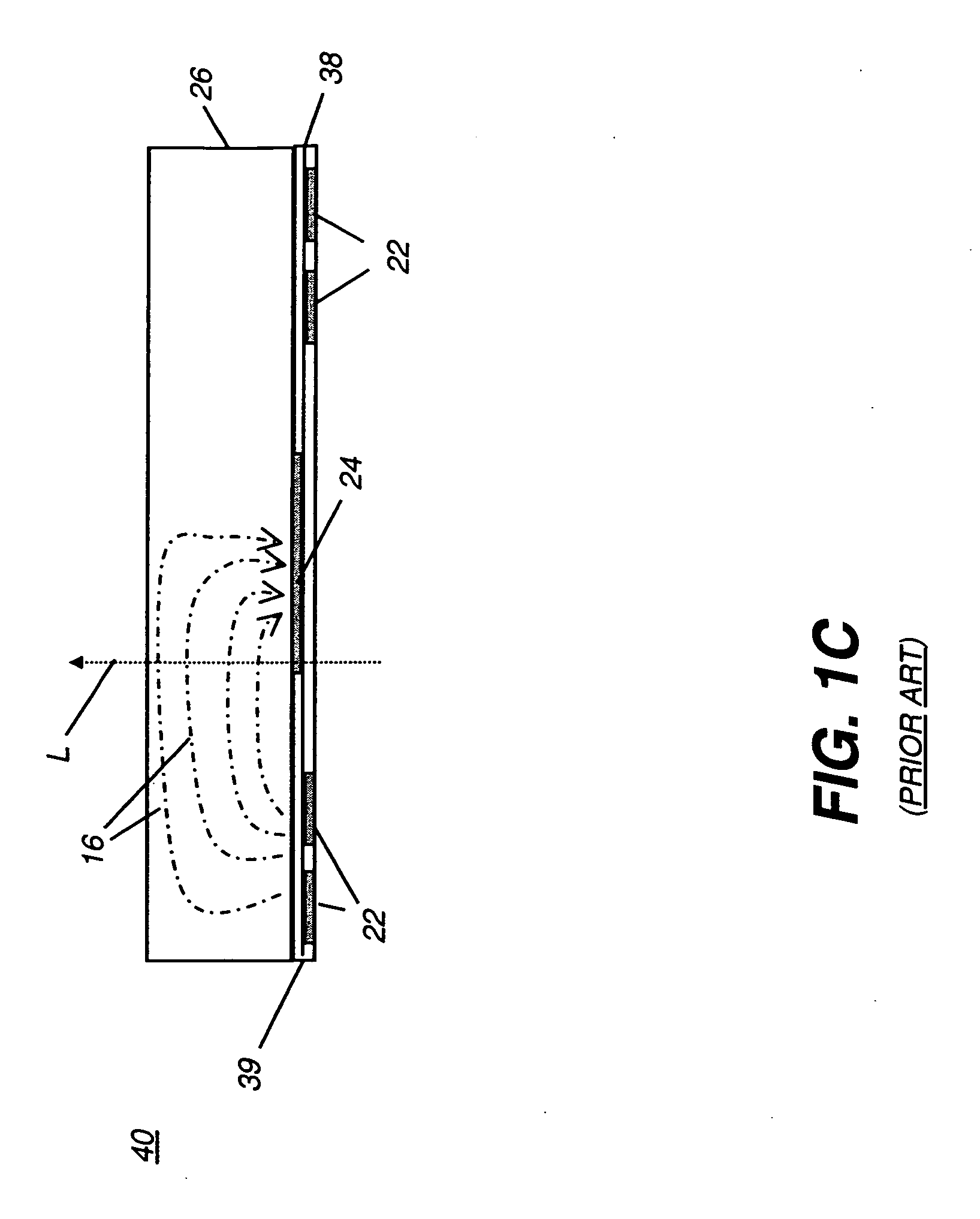Stacked-cell display with field isolation layer
a technology of field isolation layer and stacking cell, applied in the field of stacking cell display, can solve the problems of inability to address crosstalk between electrophoretic cells arranged in stacks, inability to solve crosstalk, and inability to increase so as to maximize the distance between the first and second electrodes
- Summary
- Abstract
- Description
- Claims
- Application Information
AI Technical Summary
Benefits of technology
Problems solved by technology
Method used
Image
Examples
Embodiment Construction
[0051] As indicated above, the present invention is directed to providing a stacked electro-optical cell having minimum electrical field crosstalk. The apparatus of the present invention compensates for crosstalk by using an electrical field isolation layer between two electro-optic cells in the stack.
[0052] The term electro-optic as it is applied to a material or to a display has its conventional meaning in the imaging arts, referring to modulation of a material having at least first and second display states that differ in at least one optical property. A state-changing mechanism causes an electro-optical material, such as an electro-optical imaging fluid, to change between its first and second display states according to application of an electrical field or electron transfer to the imaging material. Typically, the optical property is color perceptible to the human eye; however, some other optical property can also be affected, such as optical transmission, reflectance, luminesc...
PUM
| Property | Measurement | Unit |
|---|---|---|
| dielectric constant | aaaaa | aaaaa |
| dielectric constant | aaaaa | aaaaa |
| diameter | aaaaa | aaaaa |
Abstract
Description
Claims
Application Information
 Login to View More
Login to View More - R&D
- Intellectual Property
- Life Sciences
- Materials
- Tech Scout
- Unparalleled Data Quality
- Higher Quality Content
- 60% Fewer Hallucinations
Browse by: Latest US Patents, China's latest patents, Technical Efficacy Thesaurus, Application Domain, Technology Topic, Popular Technical Reports.
© 2025 PatSnap. All rights reserved.Legal|Privacy policy|Modern Slavery Act Transparency Statement|Sitemap|About US| Contact US: help@patsnap.com



